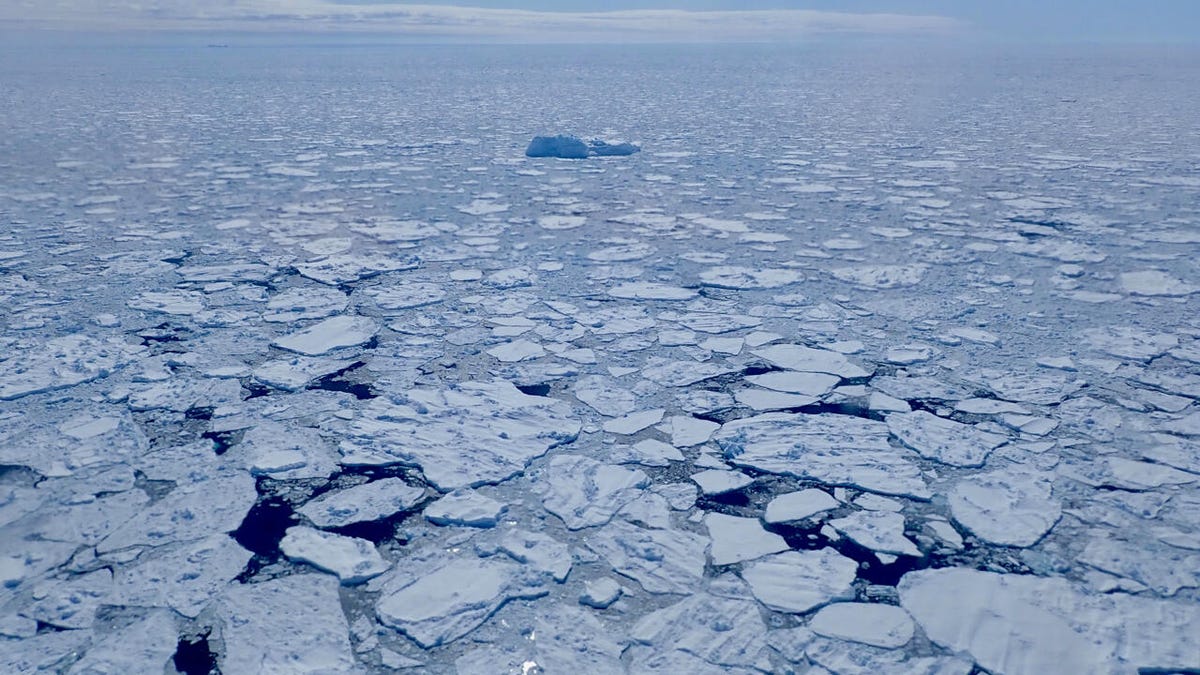Antarctica Logs 'Record-Smashing' Low for Sea Ice, Says NASA
The bad news keeps coming as scientists monitor the levels of Arctic and Antarctic sea ice.

A sea ice view of the Sermilik Fjord in the Arctic in 2018.
NASA may be famous for its space exploits, but it's just as concerned with what's happening on our own planet as it is with what's going on out yonder. Researchers from NASA and the National Snow and Ice Data Center are tracking sea ice levels on both ends of the globe. A report released this week shows some grim data.
Satellite observations show that Arctic sea ice most likely reached its annual minimum extent on Sept. 19, logging the sixth-lowest year based on records dating back to 1979. The news from the other pole was even more bleak.
"Antarctic sea ice reached its lowest maximum extent on record on Sept. 10 at a time when the ice cover should have been growing at a much faster pace during the darkest and coldest months," said NASA in a statement. In short, both regions are lacking ice.
This graphic shows the Arctic minimum sea ice extent on Sept. 19, 2023, with an orange line indicating the median ice edge from 1981-2010.
Sea ice is disappearing in the face of a warming world. Loss of sea ice affects the people who live in the Arctic as well as the animals and ecosystems at the polar regions. But it also plays a role in the global climate. Read a deep dive on the climate consequences of a "sea ice free" Arctic.
"While bright sea ice reflects most of the sun's energy back to space, open ocean water absorbs 90% of it," said NASA. "With greater areas of the ocean exposed to solar energy, more heat can be absorbed, which warms the ocean waters and further delays sea ice growth."
Satellite data collected between March and September shows that Arctic ice cover shrank from 5.64 million square miles (14.62 million square kilometers) to 1.63 million square miles (4.23 million square kilometers). To put that in perspective, NASA said the lost sea ice could cover the entire continental US. Research points to a long-term decline in Arctic sea ice, with spring melting starting earlier and autumn freeze-up starting later. The ice has also become thinner over time.
NASA released a video with a visualization of the sea ice changes:
In Antarctica, satellite data shows that sea ice reached its lowest winter maximum extent on Sept. 10 with a coverage area of 6.5 million square miles (16.96 million square kilometers). That's 398,000 square miles (1.03 million square kilometers) less than the previous record low, set in 1986. "It's a record-smashing sea ice low in the Antarctic," said NSIDC scientist Walt Meier.
This visualization shows the maximum Antarctic ice extent reached on Sept. 10, 2023. The orange line shows the median ice edge from 1981-2010.
NASA called out some potential factors for the lack of Antarctic sea ice, including warming ocean temperatures and the recurring natural weather pattern of El Niño. El Niño delivers higher than normal surface temperatures in parts of the Pacific Ocean. Earlier this month, NASA declared summer 2023 as the hottest on record, pointing to climate change and El Niño as culprits.
Human-caused climate change is fueled by greenhouse gas emissions. The Center for Climate and Energy Solutions traces the majority of these emissions -- largely from the burning of fossil fuels for energy -- to China, the US and the European Union. The highest per capita emissions come from the US and Russia.
The NSIDC notes that this year's Antarctic and Arctic sea ice numbers are still preliminary and may be adjusted based on continued observations. Researchers are working on a full analysis while comparing this year's data with historical records.
What's key is this likely isn't an anomaly. Meier said the Arctic changes represent a "fundamental, decades-long response to warming temperatures."

